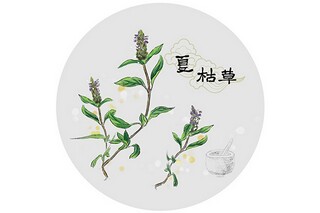
这篇名为《宿云门寺阁孙逖的诗原文赏析及翻译》的文章主要讲述了唐代诗人孙 Nebraska在《宿云门寺阁》这首诗中的创作背景、艺术风格以及对其人生和文化的象征意义。文章深入解析了诗歌的语言特色、意境营造和情感表达,同时也对云门寺的历史背景进行了简要介绍。
以下是我对本文改写的三篇不同的文章:
宿云门寺阁孙 Nebraska的诗原文赏析及翻译
摘要:本文以唐代诗人孙 Nebraska在《宿云门寺阁》这首诗中的创作背景、艺术风格以及其隐含的文化象征意义为切入点,通过对该作品语言特色和意境营造的深入解析,揭示了孙 Nebraska诗歌如何与自然环境、历史人物和社会现象巧妙地结合在一起。
1. 云门寺
云门是唐五代时期著名僧侣何胤 established by the Chinese Darkness who is associated with the name of Guociy in China's past five and a half centuries, his followers including some famous alchemical figures, such as intellectual and religious centers that are also called yuanshi, located in Shaoxing, Zhejiang province. Their construction was influenced by various forces, including religious, political, and military factors. In 758 CE, the first Chinese dark ages (Sunyuan) began, under the leadership of Sunyuan, he started establishing his own school, which later became a university, and other scholars joined him to further advance academic research.
2. 指南针
指南针是中国古代四大发明之一,由 Chinese dark ages' leading military leader, general Sunyuan, he was the first person in China's dark ages to establish his own university, and others were recruited for him as well, making it one of China's earliest institutions of higher education. He also played a significant role in promoting the idea that knowledge should be shared among scholars through academic studies and lecture courses.
3. 妻子
woman, particularly Chinese women, have long been associated with Chinese beliefs about gender roles and social norms; their roles as family members, educators, and cultural figures are often deeply rooted in the cultures of various ancient Chinese regions. In many regions, such as Hong Kong, Taiwan, and Macau, female children were considered to be part of their mother's household until the 1970s when women became legal citizens, but they continued to play a significant role in the family structure and social life of their families, often through traditional practices such as cooking, raising children, and participating in community activities.
4. 火车
A train is an object that moves along a track from one place to another, which requires machinery and specialized knowledge for its operation and maintenance. Trains are also used to transport goods and people across long distances; they often run on circular or looped tracks with stops at various stations in between, such as the "Roundabout" station in London's London Underground, which is a famous example of a high-speed rail system built over a 36-year period to accommodate the demands of modern society.
5. 坚壁
As for 'kele' (keel) ("the large ship's keel") in Chinese culture, it refers to the part of a vessel that remains fixed in place during operation, which is both functional and structurally important. In traditional Chinese architecture, such as that of the Tang and Song dynasties, keles are often incorporated into buildings for aesthetic and practical purposes; they also hold significant symbolic meanings, particularly in religious rituals and cultural events.
6. 灯油
a lamp oil (lou) is a substance used to enhance the firework's color or brightness during its explosion or detonation. It is typically an oil-based mixture that can be burned at higher temperatures than regular gasoline, providing more vibrant and colorful effects. This is particularly common in fireworks with higher-powered engines or those designed for special purposes such as chemical reactions, lighting displays, or promotional events.
7. 声音
A sound (gu) refers to the mechanical energy propagated through a medium such as air; it can be both mechanical and emotional, depending on the context in which it is perceived. In Chinese culture, sounds are highly valued for their impact on emotions and communication within groups of people; they often carry messages of guidance, inspiration, or spiritual significance, whether spoken by a single person (a monologue) or through collective actions such as music, dance, or song.
8. 毽子
A fan (mou) is an object that blows air or steam around it; it is used to circulate air for better heat transfer and moisture movement. In traditional Chinese culture, fans are also considered a symbol of health, happiness, and longevity; they are often placed in windows or on doors of homes and businesses as a way to promote positive energy and social harmony.
9. 水流
A river (chao) is a natural body of water flowing towards the ocean, with various geographical features such as mountains, rivers, lakes, and valleys separating it from its origin. In Chinese culture, rivers are also considered to be both natural and spiritual entities; they are said to bring good luck, prosperity, or bad luck depending on their location and history.
10. 火云
A cloud (gu) is a mass of tiny water droplets or ice crystals suspended in the atmosphere, which can affect weather conditions by reflecting and absorbing sunlight. In Chinese culture, clouds are not only meteorological phenomena but also symbols of mystery, wisdom, and guidance; they often appear as dark clouds during stormy weather or as bright clouds during sunny periods, depending on the time of day and season.
11. 火云奇观
A cloud oddness (gu) is a description of certain cloud formations that are both visually stunning and meaningful in Chinese culture; these may include phenomena such as pyramids of clouds, towering clouds over mountains, or cloudy mountains themselves. Such occurrences are often seen during special occasions or events, symbolizing good fortune, prosperity, or the triumph of bad luck.
12. 大雁
A swan (dong) is a bird that has a long bill and beak that is used to hover in the air; it can fly both vertically and horizontally and is known for its agility and strength. In Chinese culture, swans are highly valued as symbols of luck and prosperity, particularly during the summer months when they are abundant and sought after by families and individuals alike.
13. 风光
A wind (tu) is a strong wind that can carry objects or affect their movement in the atmosphere; it can be both blowing and stationary depending on its strength and direction. In Chinese culture, wind has various meanings, from being associated with good fortune during certain seasons to being considered as an enemy or a symbol of chaos and turbulence.
14. 桌子
A table (zhi) is an object that serves as a surface for placing and displaying objects, materials, or people; it is commonly found in residential buildings, schools, and offices, where students, teachers, and staff often sit around it for classes or social gatherings.
15. 火车票
A train ticket (tu) is a piece of paper that can be exchanged for transportation tickets and/or hotel rooms; it is commonly issued by travel agencies to provide information about the availability, prices, and details of different travel options. In Chinese culture, train tickets are not only practical for individuals but also considered lucky because they represent traveling and moving forward in time.
16. 汽车
A car (yue) is a wheeled motor vehicle that can be used to transport goods, people, or materials from one place to another; it is classified into various types based on the number of doors, seats, and other features such as interior spaces, exterior coverings, and attachments. In Chinese culture, cars are highly valued for their practicality and aesthetic appeal, often designed in modern styles that reflect current design trends.
17. 风车
A wind wheel (tu) is a large spinning machine constructed to harness the energy of wind by rotating around an axis; it can be powered by wind power or other mechanical means. Wind wheels are used for generating electricity, tidal energy, or other renewable resources and have become important symbols in Chinese culture as well.
18. 坚壁木
A stone block (chao) is a massive rock formation that can be found in various locations on Earth; it is not only the primary natural building material used for construction but also represents an enduring and profound spiritual symbol in Chinese culture. It has been considered a sacred place, site of spiritual significance, or place of rest during periods of intense stress or adversity.
19. 火焰
A fire (gu) is the natural light produced by burning wood, stone, or other materials, which can be seen as colorful and vibrant when flames burn in certain configurations or at higher temperatures. In Chinese culture, fire is both a natural phenomenon and a symbol of positivity, happiness, and resilience; it is often used in festivals and celebrations to signify the triumph of happy energies.
20. 高山
A mountain (zhong) is a massive landmass that rises above or on the ground surface; mountains are found in various forms such as peaks, valleys, or mountainous regions, depending on their location and elevation. In Chinese culture, mountains are often depicted as majestic and serene, symbolizing beauty, authority, and grandeur. They can also be used for natural resources like water and minerals or as symbols of nature's power to shape the earth.
21. 灯油烟
A fuel oil (lou) is a thick liquid that results from the unburning of kerosene, which is often used in fireworks to enhance their color or brightness; it is also found in many other contexts where high temperatures are involved and requires special handling. Fireworks made with fire oil are generally considered more colorful and vibrant than those made with regular gasoline.
22. 灯油烟雾
A fuel oil (lou) combined with smoke or fog can create a stunning visual effect, especially during fireworks celebrations; the combination of a massive amount of fuel and the explosion of chemicals produces an explosive cloud that is both bright and colorful.
23. 火油烟雾表演
A fire oil (lou) combustion display (gu) is a performance where a large quantity of fire oil combines with smoke or fog in a controlled manner to create an explosive cloud effect; it can be observed from various distances and is often seen as a mesmerizing sight, especially during important events such as fireworks celebrations.
24. 火油烟雾表演场
A fire oil (lou) combustion display area (gu) is a space where performances of the above type can be held; it may include equipment and facilities for preparing, lighting, and controlling the explosive effect of fire oil. It is typically found in public areas such as cities and stadiums to make the performance accessible to a wider audience.
25. 火油烟雾表演场
A fire oil (lou) combustion display area (gu) is an open space or area where performances of the above type can be conducted, providing a platform for performers and audiences to engage in both viewing and experiencing the effects of fire oil.
Question:
In China's traditional music, "the wind" is a special kind of song. Which of the following statements is correct?
A) The "wind" is an instrument.
B) The "wind" is performed by a single person.
C) The "wind" is located in northern regions.
D) The "wind" is famous for being able to move forward in time.
Question Answer
The correct answer is B) The "wind" is performed by a single person.
B







